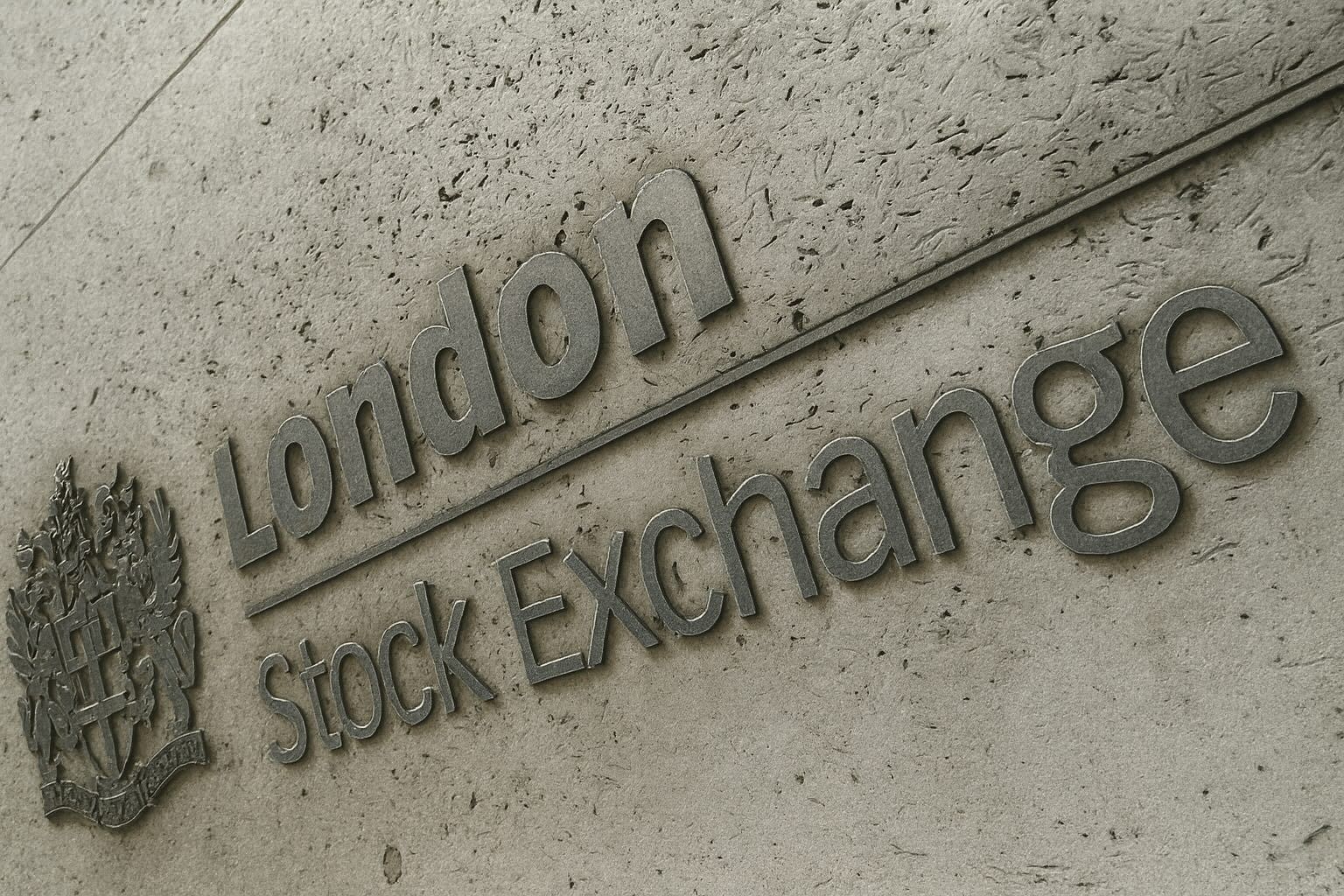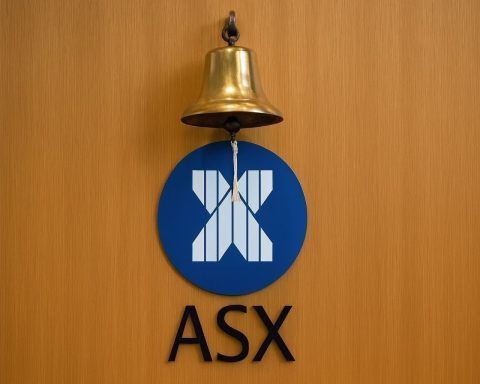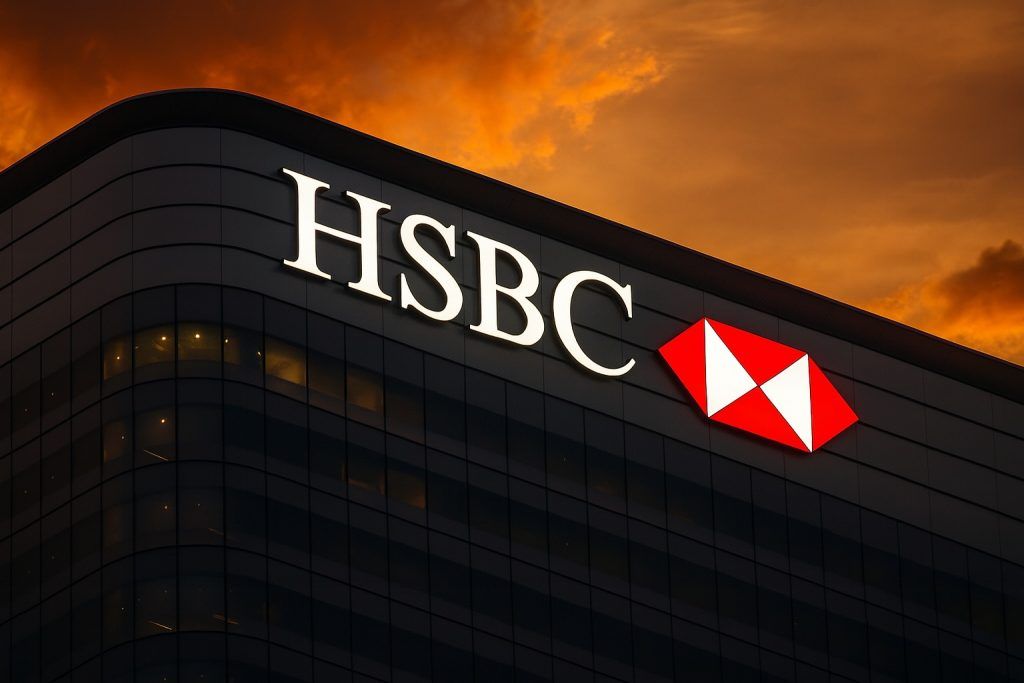- Fresh Highs: Britain’s FTSE 100 index hovered around 9,650 points on 28 October 2025, near an all-time peak after hitting a record close of 9,645.62 last week [1]. The blue-chip index is up roughly 15–17% in 2025, putting this year on track to be its strongest since 2009 [2].
- Oil & Trade Optimism: A 5% spike in oil prices late last week, after the U.S. slapped new sanctions on Russia’s top oil producers, sent BP and Shell shares up 2–3%, boosting the FTSE 100’s energy-heavy lineup [3]. Hopes for a U.S.–China trade deal – with President Trump meeting China’s Xi Jinping this week – have lifted global market sentiment [4], aiding the London rally.
- Banking Boost:Financial stocks have led recent gains on upbeat earnings. NatWest jumped ~5% Friday to its highest since 2008 after reporting a 30% surge in Q3 profit and raising its outlook [5]. On Tuesday, HSBC announced a 14% drop in quarterly profit due to a one-off legal charge, but raised its 2025 income forecast – sending its stock up nearly 3% [6]. The FTSE 100’s bank index climbed ~1.4% over the past week [7], helping drive the index higher.
- Upbeat Data:Surprisingly strong UK economic data underpinned confidence. Retail sales rose for a fourth straight month (up 0.5% in September) despite expectations of a decline [8]. Consumer confidence ticked up and inflation held steady, bolstering bets that the Bank of England will cut interest rates by 0.25% in December [9]. In the U.S., cooler inflation has traders speculating the Federal Reserve may even trim rates at its meeting this week [10].
- Global Context: London’s rally comes amid worldwide market strength. The U.S. S&P 500 and Nasdaq just hit record highs, Japan’s Nikkei topped 50,000 for the first time [11], and European stocks are near peaks on trade optimism and easing-rate hopes. A firmer pound (~$1.33) has slightly crimped UK exporters [12], but investor sentiment remains broadly upbeat as multiple tailwinds converge.
London’s Blue-Chip Index Flirts with Records
London’s flagship FTSE 100 index is trading near record territory, extending a dramatic October rally. The FTSE closed last week at an all-time high of 9,645.62 points [13] and has barely budged from that pinnacle in recent sessions. After six consecutive days of gains through Monday, the index inched up another ~0.1% on 28 October to around 9,654 – essentially flat but enough to mark a fresh record close [14]. The domestically focused FTSE 250 mid-cap index has also climbed, reaching ~22,500 (its highest since 2022) before easing slightly [15].
This steady performance signals investors holding onto historic gains even as some pocket profits. Early Tuesday, the FTSE 100 opened modestly higher at ~9,664 points [16], buoyed by earnings news (notably from HSBC) before leveling off by afternoon. Overall, October’s late-month rally has put UK stocks within a whisker of new milestones, capping what could be the FTSE’s best year in over a decade [17].
Oil Boom and Trade Hopes Fuel the Rally
Surging oil prices and hopes of a trade truce have been key drivers of London’s stock surge. Last week, Brent crude oil jumped roughly 5% in a single day after Washington announced sweeping new sanctions on Russian oil giants Rosneft and Lukoil, stoking expectations of tighter global supply [18] [19]. The geopolitical jolt sent shares of FTSE heavyweights BP and Shell up 2–3% [20]. Those energy giants carry significant weight in the index, so their rise helped propel the FTSE 100 to record levels [21]. “Geopolitical developments have injected fresh momentum” into the market, analysts noted, keeping Brent crude above $100 a barrel and making the FTSE 100 a prime beneficiary of the oil rally [22] [23].
At the same time, renewed optimism on U.S.–China trade relations has brightened the outlook globally. Investors are hopeful that a meeting this week between U.S. President Donald Trump and China’s President Xi Jinping could defuse trade tensions [24]. The current truce in the long-running tariff war expires November 1, but officials have signaled progress toward a deal [25]. “I think we’re going to come away with a deal,” Trump said of the upcoming talks [26]. The mere prospect of a thaw between the world’s two largest economies sent stocks flying across Asia on Monday and lifted sentiment in Europe and the UK [27]. London’s FTSE, with many globally exposed companies, got a further boost from this improving international backdrop.
Not all commodity news was positive for the FTSE, however. The easing of trade fears dented demand for safe-haven assets like gold, briefly knocking gold prices below $4,000/oz and dragging down precious metal miners in the FTSE 100 [28]. Major gold producers like Fresnillo saw declines on Monday as investors rotated toward riskier assets. But by Tuesday, gold had regained some lost ground and mining stocks stabilized [29], suggesting that any pullback in the commodity patch may be temporary amid the generally risk-on mood.
Bank Earnings Spark Financial Stock Gains
Banking shares have been a cornerstone of the FTSE 100’s recent advance, as a string of strong earnings reports lifted the sector. Last week, NatWest (formerly Royal Bank of Scotland) delivered a standout report – quarterly profit jumped 30% and the lender upgraded its full-year outlook [30]. NatWest’s stock leapt about 5% on Friday to its highest level since 2008 [31], and other UK bank stocks rode its coattails higher. The FTSE’s bank index climbed ~1.4% on the week [32], helping drive the broader index to records.
On 28 October, attention turned to Europe’s largest bank, HSBC, which reported results that were closely watched by the market. HSBC revealed its third-quarter pre-tax profit fell 14% to $7.3 billion, largely due to a hefty $1.1 billion legal provision after losing part of an appeal tied to the Madoff Ponzi scheme [33]. Crucially, however, HSBC’s underlying business showed resilience – and the bank raised its 2025 net interest income forecast to at least $43 billion (up from ~$42B) [34]. That upbeat guidance was taken as a vote of confidence in future earnings. HSBC’s London-listed shares, which had dipped on Monday when the legal charge was first disclosed, rebounded nearly 3% on Tuesday following the official results [35]. The stock’s rise contributed significantly to the FTSE 100’s strength on the day [36], given HSBC’s heavy index weighting.
Other corporate updates also moved UK stocks. Barclays grabbed headlines with a deal to acquire U.S. consumer lender Best Egg for $800 million [37], a bid to expand its American retail banking footprint. Investors appeared to take the news in stride, and Barclays’ share price saw only a muted reaction. In contrast, Airtel Africa – a telecom firm operating across the continent – saw its stock rocket over 7% on Tuesday after a stellar earnings report. The company’s half-year pre-tax profit quadrupled to $656 million from a year earlier [38], thanks to booming customer growth and currency gains in key markets. Airtel’s surge made it the top FTSE 100 gainer of the day [39], underscoring how positive corporate news is being rewarded in the current market climate.
The FTSE’s broad rally has also been propelled by some remarkable turnaround stories. Shares of engineering giant Rolls-Royce, for example, have doubled in 2025 amid recovering jet engine demand and new defense contracts, making Rolls one of the five most valuable companies in the index [40]. Likewise, airline conglomerate IAG (owner of British Airways) has seen its stock soar ~90% in the past year as air travel rebounded sharply [41]. Such rebounds in heavyweight names have provided an extra lift to the FTSE 100, which is dominated by global cyclical companies. In effect, strong corporate earnings and turnaround success stories are feeding into stock prices, creating a virtuous cycle of upbeat news fueling investor buying.
Economic Tailwinds Strengthen Investor Confidence
Underpinning the market’s rise is a sense that economic conditions in the UK are improving. Recent data have surprised to the upside, easing recession fears. Most notably, UK retail sales have now increased for four months in a row, defying analysts’ predictions of a dip [42]. The latest reading showed a +0.5% gain in September retail volumes, as British consumers kept spending on goods like clothing and jewelry [43]. Steady spending is a positive sign for the economy’s momentum heading into the holiday quarter.
At the same time, inflation in Britain has steadied after a post-pandemic surge. The annual consumer price index has come off its highs and held roughly stable in recent reports [44]. With price pressures no longer worsening and growth holding up, markets are increasingly convinced the Bank of England will pivot to cutting interest rates. Investors are betting the BoE could trim rates by 0.25% in December [45] – which would be its first rate cut in this cycle. The mere expectation of easier monetary policy has been a tonic for stocks, since lower rates would reduce borrowing costs and potentially stimulate business activity.
Across the Atlantic, there’s a similar story with the U.S. Federal Reserve. U.S. inflation data for September came in cooler than expected, and investors are now pricing in a decent chance the Fed might cut rates at its meeting this week [46]. (The Fed had previously been raising rates to combat inflation, so a cut would mark a major policy shift.) Hopes of a Fed rate reduction have weakened the U.S. dollar slightly and boosted risk assets globally. Given that many FTSE 100 companies earn revenue in dollars, a softer dollar and stronger global growth outlook benefit London’s market. “Good news has been piling up for London stocks,” one market strategist noted, citing the combination of resilient corporate earnings, easing inflation, and geopolitical tailwinds supporting equities [47].
There are also political developments factoring into sentiment. In the UK, Chancellor of the Exchequer Rachel Reeves (in Prime Minister Keir Starmer’s new government) is preparing her first budget next month, and leaks suggest it may include tax changes such as an increase in capital gains tax for wealthy investors. For now, traders seem unfazed – the FTSE was flat on the day such tax news emerged, and some analysts argue that slightly higher taxes are a worthy trade-off if they fund measures to spur productivity and growth. Moreover, Britain received an encouraging forecast that its economy will be the second-fastest growing in the G7 next year (at ~1.3% in 2025, behind only the U.S.), which has added to the sense that the UK outlook is brightening. Overall, the mix of political signals and economic data has skewed positive for investor confidence, complementing the corporate and global drivers of the rally.
Cautious Optimism: What Experts Are Saying
Even as the FTSE 100 flirts with record highs, market veterans are counseling a dose of caution. The index’s swift climb – roughly 7% in October alone – has some wondering if enthusiasm might be getting ahead of fundamentals. However, most experts characterize the mood as optimistic but not euphoric. “The FTSE 100 has had a good run… after the sudden outbreak of popular enthusiasm about the UK with the CPI figures last week, hopes are that maybe we have turned a corner,” said Chris Beauchamp, chief market analyst at IG Group [48]. He added that while “there’s obviously optimism about the UK, I wouldn’t say it’s rampant – but people are seeing a lot of value in the index” [49]. In other words, investors are growing more confident in UK assets, yet sentiment hasn’t reached speculative extremes.
Some analysts point out that the FTSE 100’s valuation still looks reasonable. Despite the rally, the FTSE trades at around 12–13 times forward earnings (well below U.S. market multiples), thanks to its mix of banks, oil majors and other “old economy” stocks. Defensive sectors like healthcare, utilities, and consumer staples – which make up a big chunk of the FTSE – are seen as stable if unspectacular, and they haven’t run up as wildly as tech stocks elsewhere [50]. This has kept the overall index’s rise fairly orderly. “There is still a lot of value on the table,” Beauchamp noted, echoing that view [51].
That said, risks remain on the radar. A key concern is whether the slew of positive catalysts can continue. The FTSE 100’s heavyweights depend on global forces – commodity prices, trade relations, interest rates – that can swing in unforeseen ways. A setback in the U.S.–China trade talks or a sharp drop in oil prices could quickly sour the risk-on sentiment that’s prevailed in October. Likewise, if the Bank of England were to hold off on rate cuts due to any uptick in inflation, it might disappoint investors who have all but priced in a December cut.
For now, those risks are overshadowed by momentum. Global markets are in a bullish groove, and UK stocks are benefiting from the tide lifting all boats. Wall Street’s major indices rallied again on Monday (with the Nasdaq up nearly 2% to a new peak) [52], and Europe has been buoyant in recent weeks. As one commentator put it, “the FTSE 100 is riding a wave of good news – from strong bank profits to $100 oil – and investors are keen to stay on the ride”. The consensus among many strategists is to remain cautiously optimistic: enjoy the gains, but keep an eye on those brewing risks.
Bottom line: As of 28 October 2025, the FTSE 100 is near record highs, powered by a cocktail of oil-fueled earnings, positive economic surprises, and improved sentiment at home and abroad. London’s blue-chip stocks have shaken off years of underperformance and are back in favor with investors. If trade peace holds and central banks deliver the expected rate relief, the FTSE’s late-2025 rally could have further room to run – but even if a pullback comes, few can deny that the U.K. market’s momentum heading into year-end is the strongest it’s been in a very long time [53] [54].
References
1. ts2.tech, 2. ts2.tech, 3. ts2.tech, 4. ts2.tech, 5. ts2.tech, 6. www.marketscreener.com, 7. ts2.tech, 8. ts2.tech, 9. ts2.tech, 10. ts2.tech, 11. ts2.tech, 12. ts2.tech, 13. ts2.tech, 14. www.morningstar.com, 15. ts2.tech, 16. www.marketscreener.com, 17. ts2.tech, 18. ts2.tech, 19. ts2.tech, 20. ts2.tech, 21. ts2.tech, 22. ts2.tech, 23. ts2.tech, 24. ts2.tech, 25. ts2.tech, 26. ts2.tech, 27. ts2.tech, 28. www.reuters.com, 29. www.tradingview.com, 30. ts2.tech, 31. ts2.tech, 32. ts2.tech, 33. www.reuters.com, 34. cfo.economictimes.indiatimes.com, 35. www.marketscreener.com, 36. www.marketscreener.com, 37. www.tradingview.com, 38. www.marketscreener.com, 39. www.marketscreener.com, 40. ts2.tech, 41. ts2.tech, 42. ts2.tech, 43. ts2.tech, 44. ts2.tech, 45. ts2.tech, 46. ts2.tech, 47. ts2.tech, 48. www.reuters.com, 49. www.reuters.com, 50. ts2.tech, 51. www.reuters.com, 52. www.marketscreener.com, 53. www.reuters.com, 54. ts2.tech







